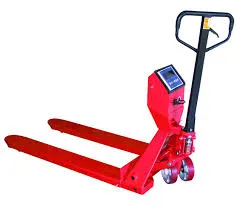


The Importance of Anti-Fall Protection in Work Environments
In various industries, particularly construction and maintenance, workers often find themselves at significant heights, where the risk of falling is an ever-present danger. As a result, the implementation of anti-fall protection measures is not just a regulatory requirement but a crucial aspect of workplace safety. Organizations must prioritize the health and safety of their employees, and investing in reliable fall protection systems is an integral part of this commitment.
Understanding Fall Hazards
Before delving into the specifics of anti-fall protection, it’s essential to understand the nature of fall hazards. Falls are one of the leading causes of workplace injuries and fatalities. According to statistics from the Occupational Safety and Health Administration (OSHA), falls accounted for a substantial percentage of worker deaths in construction settings. The unpredictability of working at heights exacerbates these risks, making it imperative for companies to adopt a proactive approach to hazard identification and mitigation.
Types of Anti-Fall Protection Systems
There are several types of anti-fall protection systems designed to protect workers from falls. These include
1. Guardrails One of the simplest forms of fall protection, guardrails are physical barriers erected along the edges of elevated surfaces. Their primary function is to prevent workers from inadvertently walking off edges.
2. Personal Fall Arrest Systems (PFAS) PFAS include harnesses, lanyards, and anchorage points that are designed to catch a worker if they fall. These systems must be inspected regularly to ensure they remain effective and compliant with safety standards.
3. Safety Nets Used in scenarios where conventional fall protective measures may not be practical, safety nets can catch falling workers and tools, preventing injuries and material damage.
4. Work Positioning Systems These systems allow workers to elevate themselves safely with the use of belts and harnesses while providing support that decreases the likelihood of falling.

5. Lifelines and Fall Restraint Systems These involve ropes and hardware that prevent workers from reaching a fall hazard while working at heights.
Benefits of Implementing Anti-Fall Protection
Investing in robust anti-fall protection strategies leads to numerous benefits
1. Enhanced Worker Safety The most critical benefit is the protection of workers from falls, which can lead to serious injuries or fatalities. By implementing effective anti-fall measures, organizations foster a safer work environment, ultimately reducing the number of accidents.
2. Legal Compliance Adhering to OSHA regulations and other safety standards not only protects workers but also safeguards organizations from potential legal issues, fines, and lawsuits. Compliance demonstrates a commitment to safety, which can enhance a company's reputation.
3. Improved Employee Morale When employees feel safer in their work environment, their morale is likely to improve. This, in turn, can lead to increased productivity and job satisfaction.
4. Reduced Financial Liability Injuries resulting from falls can lead to costly medical bills, legal claims, and increased insurance costs. By preventing falls, organizations can mitigate these expenses.
5. Training and Preparedness The implementation of anti-fall protection systems often accompanies training programs that educate workers about fall hazards and the proper use of fall protection equipment. This knowledge empowers workers to take personal responsibility for their safety.
Conclusion
In conclusion, anti-fall protection is an essential component of workplace safety, particularly in industries where working at heights is inevitable. By understanding the types of fall protection systems available and recognizing the benefits they confer, organizations can create a culture of safety that prioritizes worker well-being. Investing in anti-fall measures not only protects employees but also enhances overall business performance, ensuring a safer, more productive work environment. As we continue to navigate the complexities of modern workplaces, the commitment to safety must remain a top priority for every organization.



